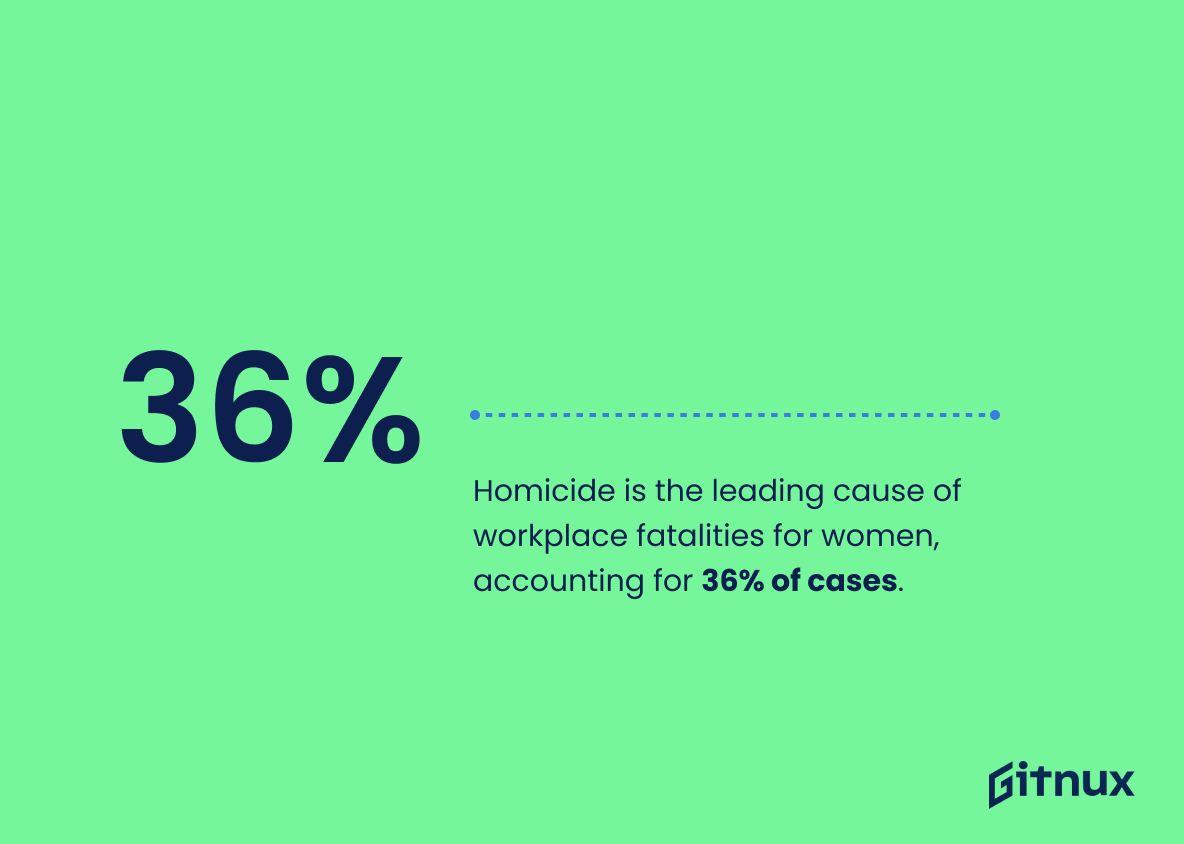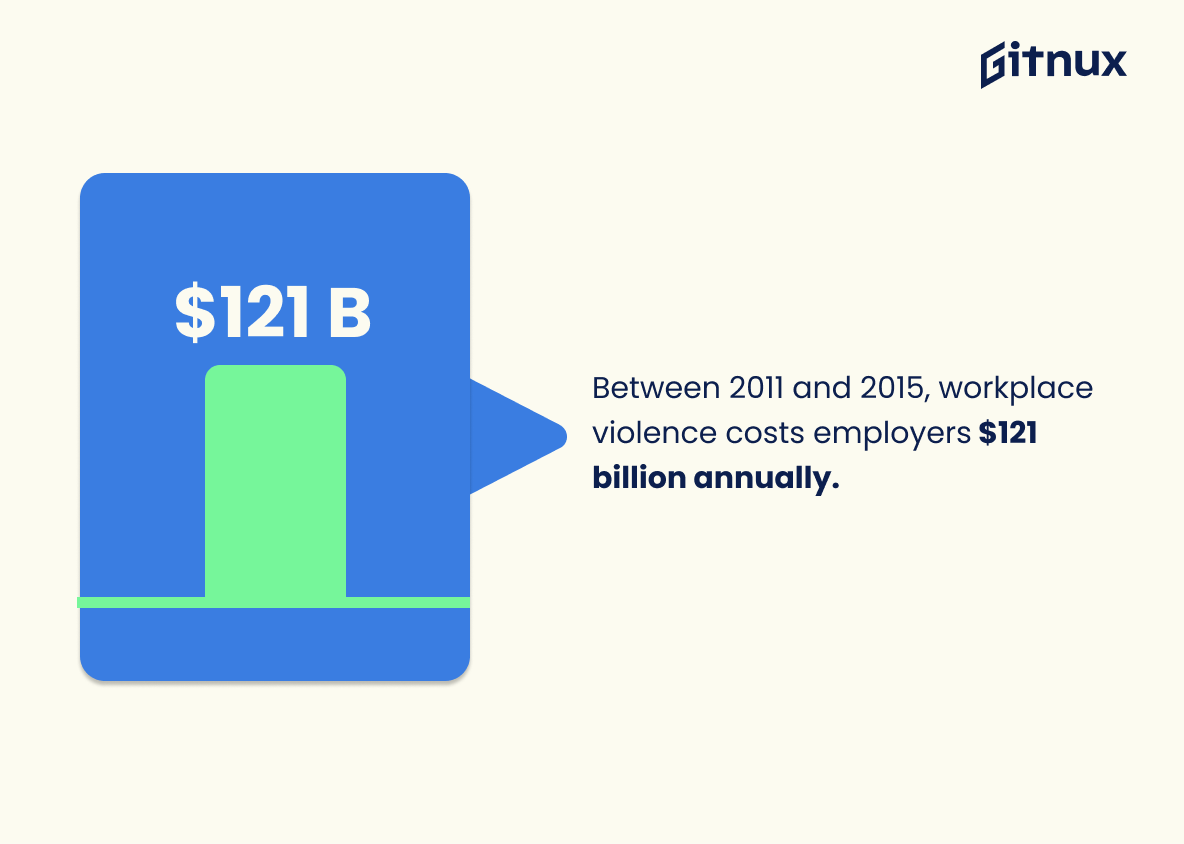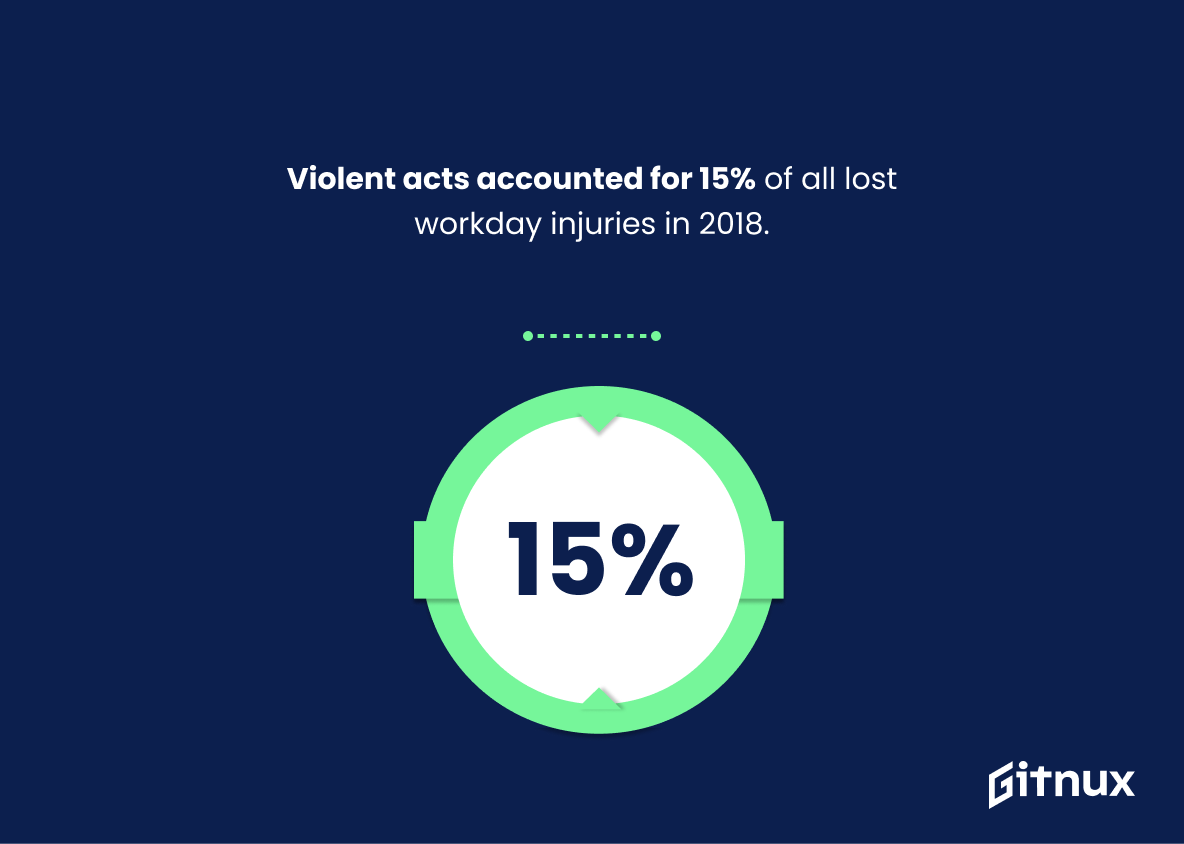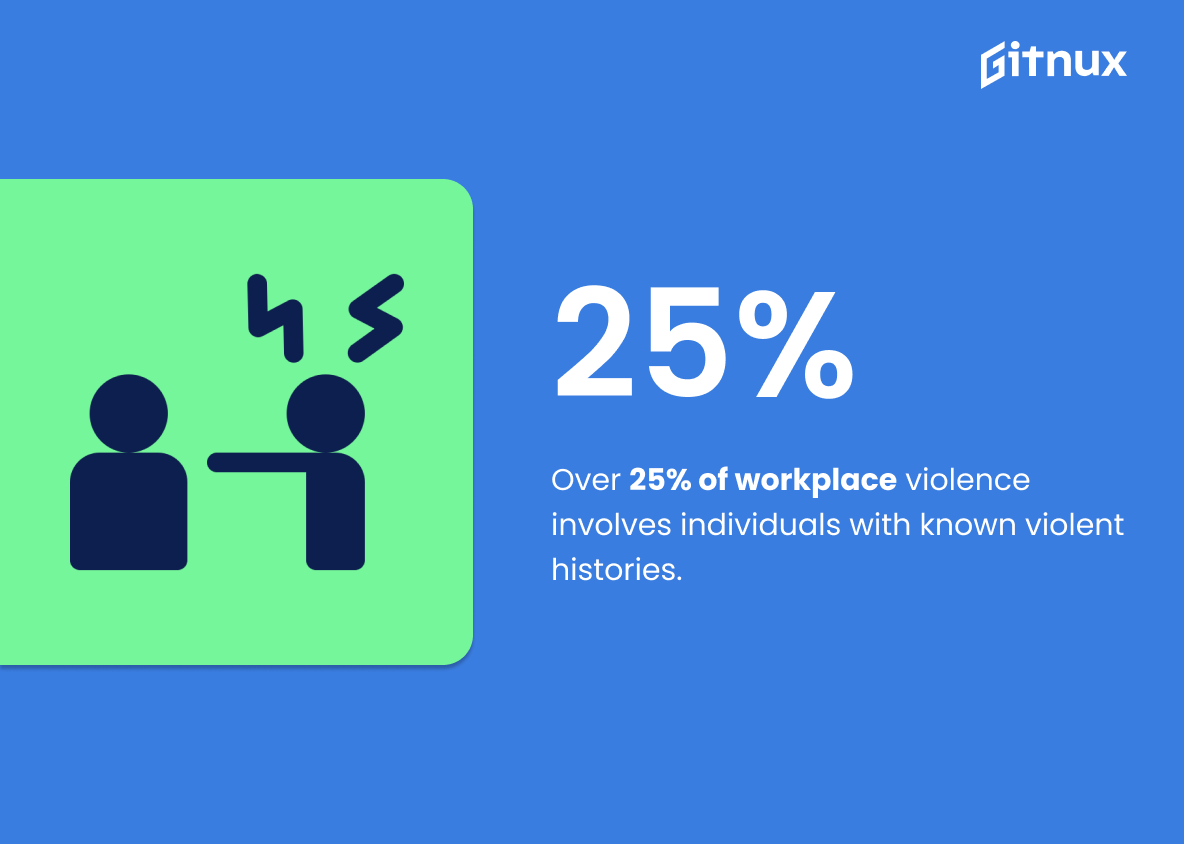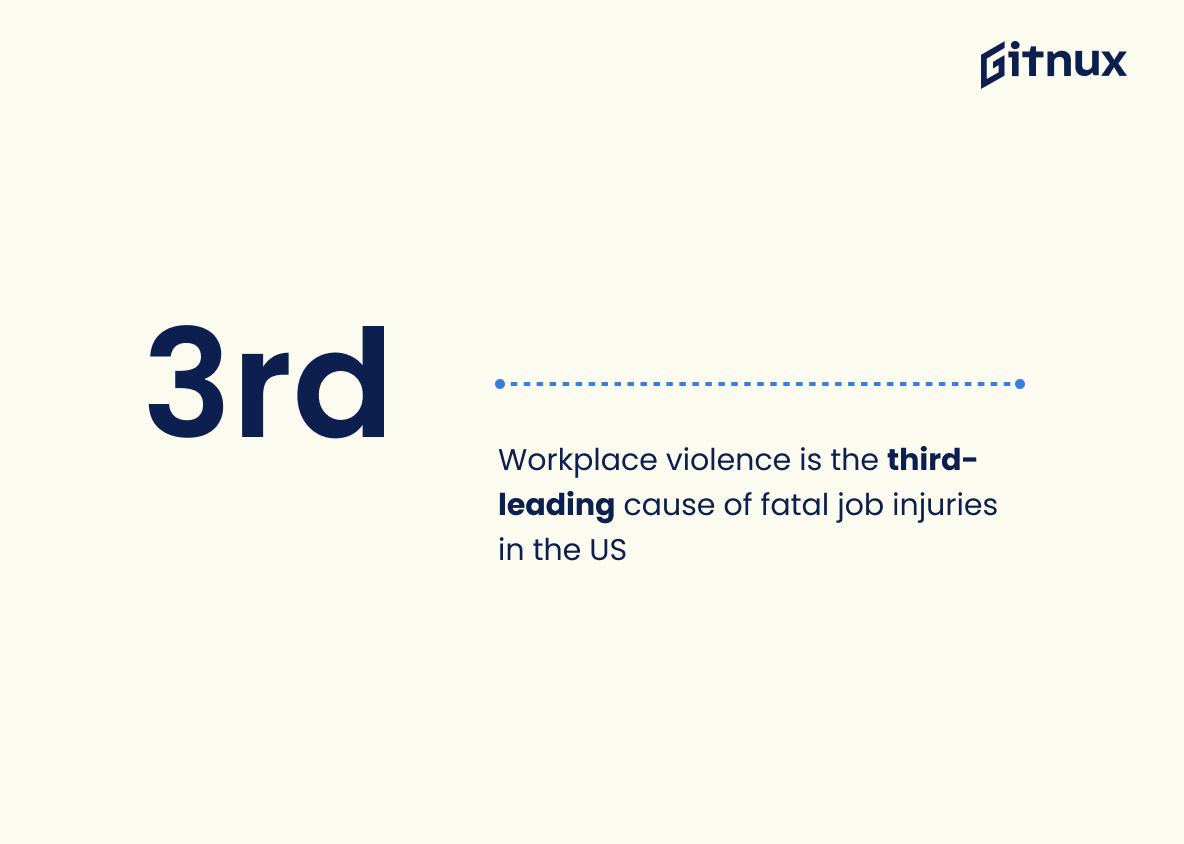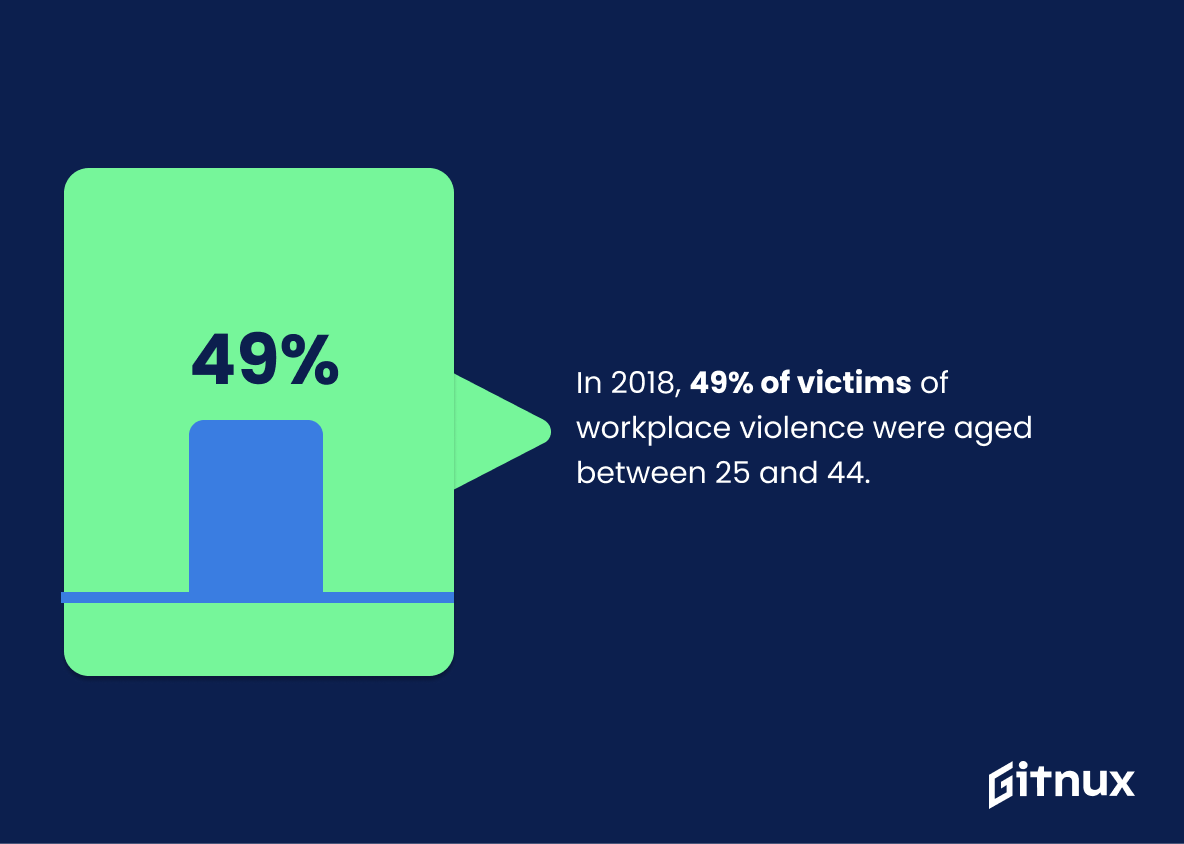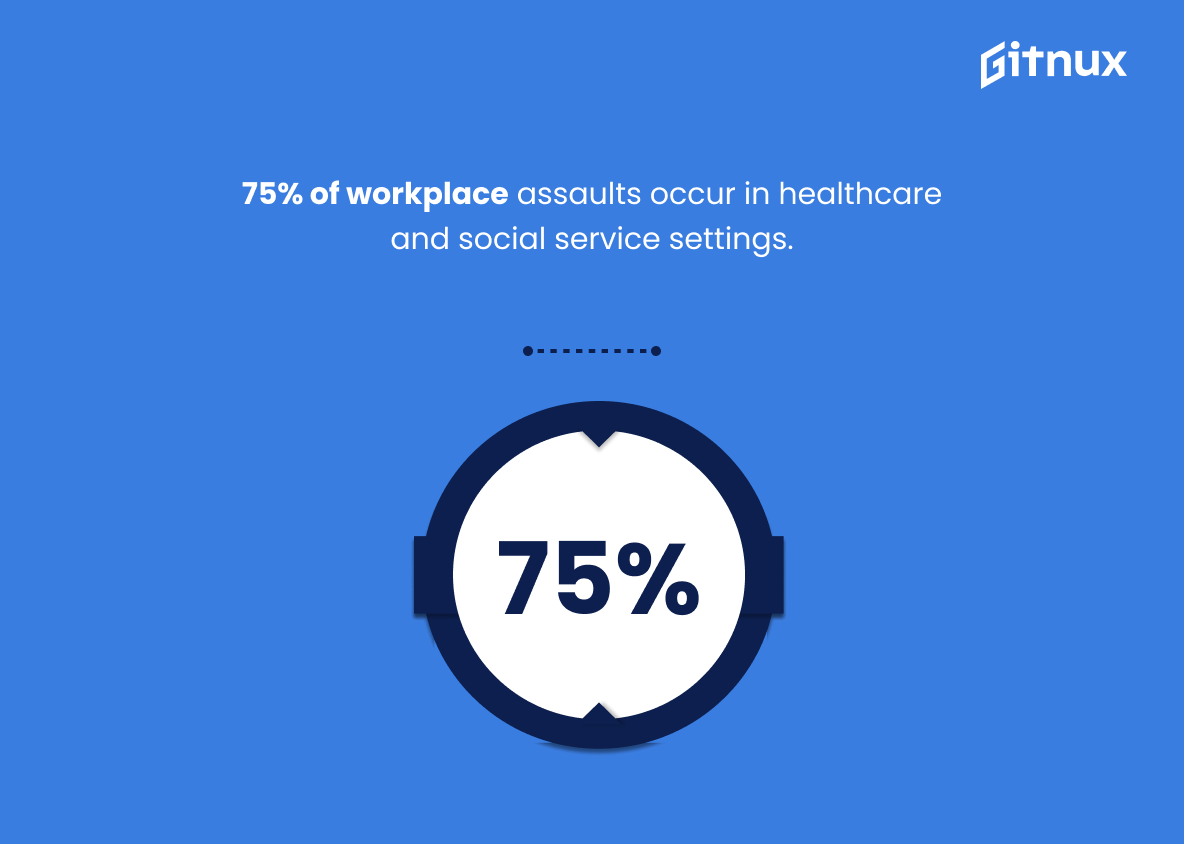Workplace violence is a serious issue that affects millions of American workers each year. According to the Occupational Safety and Health Administration (OSHA), approximately 2 million American workers are victims of workplace violence annually. In 2018, 61% of workplace violence injuries were experienced by men while 39% were experienced by women. Additionally, 20% of all workplace fatalities in 2018 resulted from violent acts or animal attacks.
Unfortunately, many workplaces do not have formal policies or programs in place to address this problem; 70% lack such measures according to the Society for Human Resource Management (SHRM). Healthcare settings account for almost half (48%) of all incidents involving workplace violence and retail employees experience 14%. The cost associated with these incidents is staggering – between 2011 and 2015 employers paid out $121 billion due to lost workdays resulting from assaults alone.
When looking at specific occupations, law enforcement officers had the highest rate among all professions with 56.8%, followed closely by residential services personnel who care for those suffering from mental illness – 6 times higher than outpatient service providers. Homicide was also found as one major cause behind fatal occupational injuries amongst women accounting for 36%. Furthermore, only 45 percent companies perform training on how their staff should respond when faced with an incident related to workplace violence whereas 75 percent believe their employer isn’t doing enough about it overall.
Overall, these statistics paint a grim picture regarding the prevalence and severity of Work Place Violence across America today which needs urgent attention if we want our workforce safe again soon.
Work Place Violence Statistics Overview
In 2018, 20% of workplace fatalities were the result of violence and other injuries by persons or animals.
This statistic is a stark reminder of the dangers that exist in the workplace. It highlights the fact that violence and other injuries by persons or animals are a major cause of workplace fatalities, and that employers must take steps to ensure the safety of their employees. It also serves as a warning to employees to be aware of their surroundings and to take precautions to protect themselves from potential harm.
70% of workplaces do not have a formal policy or program to address workplace violence.
This statistic is a stark reminder of the prevalence of workplace violence and the lack of preparedness of many organizations to address it. It highlights the need for employers to take proactive steps to protect their employees from potential harm and to create a safe and secure work environment. It also serves as a warning to employees to be aware of the potential risks of workplace violence and to take steps to protect themselves.
Homicide is the leading cause of workplace fatalities for women, accounting for 36% of cases in 2018.
This statistic is a stark reminder of the dangers that women face in the workplace. It highlights the need for employers to take proactive steps to ensure the safety of their female employees, as well as to provide support and resources to those who have been victims of workplace violence. It also serves as a reminder that workplace violence is a real and serious issue that needs to be addressed.
Between 2011 and 2015, workplace violence costs employers $121 billion annually.
This statistic is a stark reminder of the immense financial burden workplace violence places on employers. It is a staggering amount of money that could be better spent on other areas of the business. It is a clear indication that workplace violence is a serious issue that needs to be addressed.
Violent acts accounted for 15% of all lost workday injuries in 2018.
This statistic is a stark reminder of the prevalence of workplace violence in 2018. It highlights the fact that a significant portion of lost workday injuries were caused by violent acts, indicating that workplace violence is a serious issue that needs to be addressed.
More than 25% of workplace violence incidents involve someone with a known violent istory.
This statistic is a stark reminder that workplace violence can come from any direction, even from those with a known violent history. It highlights the importance of being aware of the potential for violence in the workplace, regardless of the background of the perpetrator. It also serves as a warning to employers to take extra precautions when hiring and to be vigilant in monitoring the behavior of their employees.
20% of workplace violence incidents are committed by coworkers or former coworkers.
This statistic is a stark reminder that workplace violence is not only a threat from outside sources, but can also come from within. It is important to be aware of the potential for violence from coworkers or former coworkers, as it can be difficult to anticipate and prevent. This statistic highlights the need for employers to be vigilant in monitoring the behavior of their employees and to take appropriate action when necessary.
Workplace violence is the third-leading cause of fatal occupational injuries in the United States.
This statistic serves as a stark reminder of the prevalence of workplace violence in the United States. It highlights the fact that workplace violence is a serious issue that needs to be addressed, and that it is a major cause of death in the workplace. It is a sobering reminder that workplace violence is a real and present danger that needs to be taken seriously.
In 2018, 49% of victims of workplace violence were aged between 25 and 44.
This statistic is a stark reminder that workplace violence is not limited to any particular age group. It is a pervasive problem that affects people of all ages, and it is important to be aware of the risks regardless of age. This statistic highlights the need for employers to take proactive steps to ensure the safety of all employees, regardless of age.
75% of workplace assaults occur in healthcare and social service settings.
This statistic is a stark reminder of the prevalence of workplace assaults in healthcare and social service settings. It highlights the need for employers in these industries to take proactive steps to ensure the safety of their employees. It also serves as a warning to those who work in these settings to be aware of the potential risks and take appropriate precautions.
Between 2011 and 2015, assault rates for workers in residential services for the mentally ill were 6 times greater than for those in outpatient services.
This statistic is a stark reminder of the dangers that workers in residential services for the mentally ill face on a daily basis. It highlights the need for increased safety measures and better protection for those in this line of work, as the risk of assault is significantly higher than for those in outpatient services.
In 2018, law enforcement officers experienced the highest rate of workplace violence (56.8%) among all occupations.
This statistic is a stark reminder of the dangers that law enforcement officers face on a daily basis. It highlights the need for employers to take workplace violence seriously and to ensure that their employees are adequately protected. It also serves as a warning to other occupations that workplace violence can affect any profession, and that it is important to take steps to prevent it.
Conclusion
Workplace violence is a serious issue that affects millions of American workers each year. According to the statistics, approximately 2 million people are victims of workplace violence annually and in 2018, 61% of these cases were men while 39% were women. Additionally, 20% of all workplace fatalities in 2018 resulted from violent acts by persons or animals and 70% of workplaces do not have any formal policy or program to address this problem. Furthermore, 48% of incidents occur in healthcare settings and 75% employees believe their employers are not doing enough to prevent it. Homicide was found to be the leading cause for female fatalities at 36%, with retail workers accounting for 14%. Workplace violence costs employers $121 billion per annum between 2011-2015; 15 %of lost workday injuries occurred due to violent acts; 45 % companies perform training on how respond such situations; 25 % involve someone with known history & 20 % committed by coworkers/former coworkers respectively . It also emerged as third leading cause fatal occupational injury US (56.8%) among law enforcement officers being highest rate followed residential services mentally ill 6 times greater than outpatient services All these facts point towards an urgent need for more effective policies & programs addressing prevention & response strategies against workplace violence so that safety can be ensured both inside outside working environment .
References
0. – https://www.work.chron.com
1. – https://www.shrm.org
2. – https://www.ncadd.org
3. – https://www.bls.gov
4. – https://www.bmcpublichealth.biomedcentral.com
5. – https://www.afimacglobal.com
6. – https://www.bjs.gov
7. – https://www.injuryfacts.nsc.org
8. – https://www.ncci.com
9. – https://www.osha.gov
ZipDo, cited June 2023: Work Place Violence Statistics


